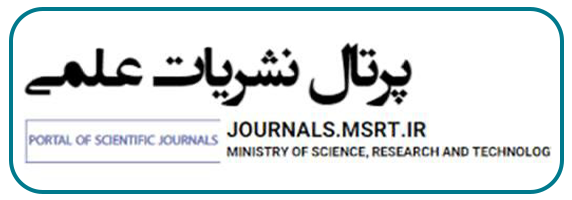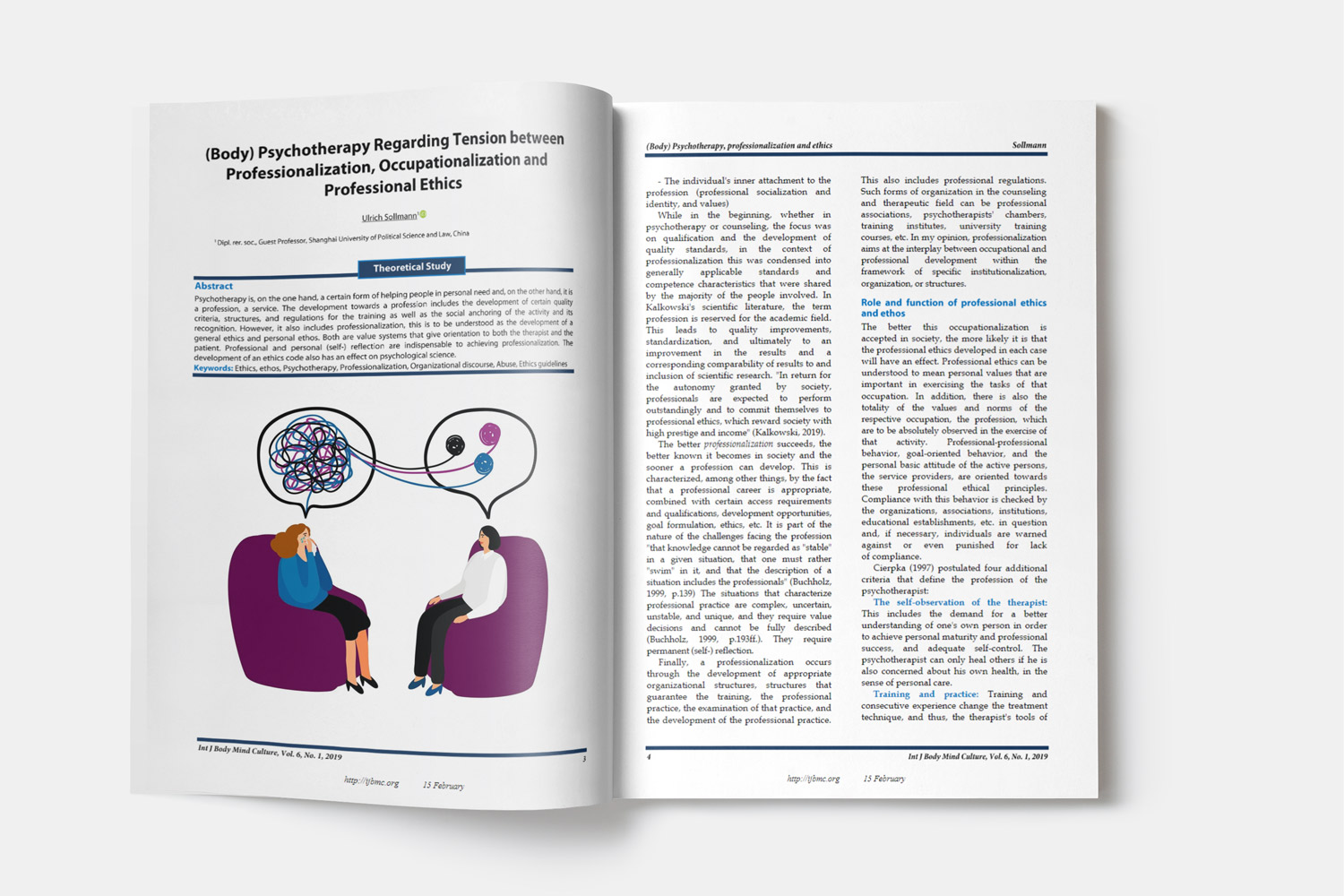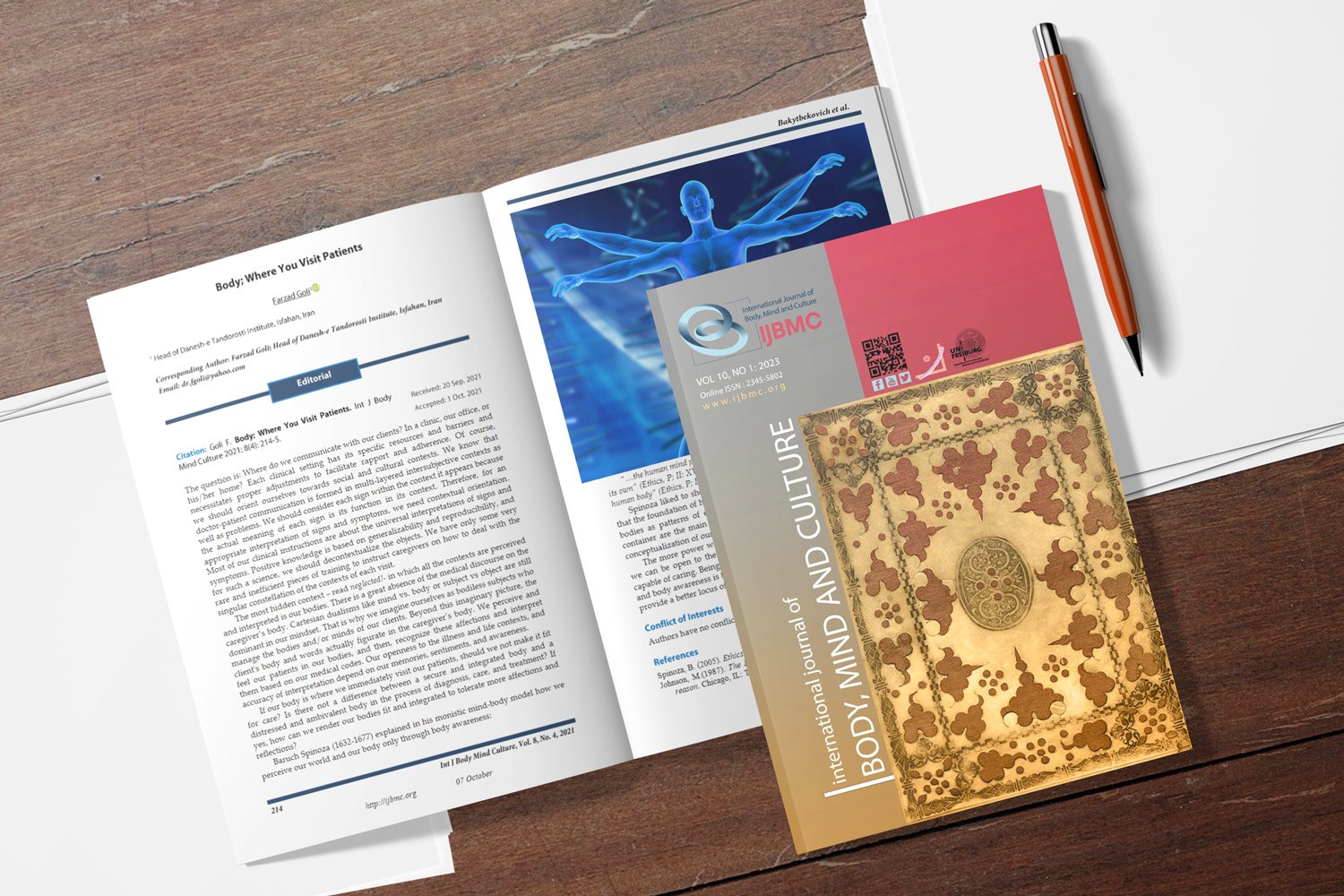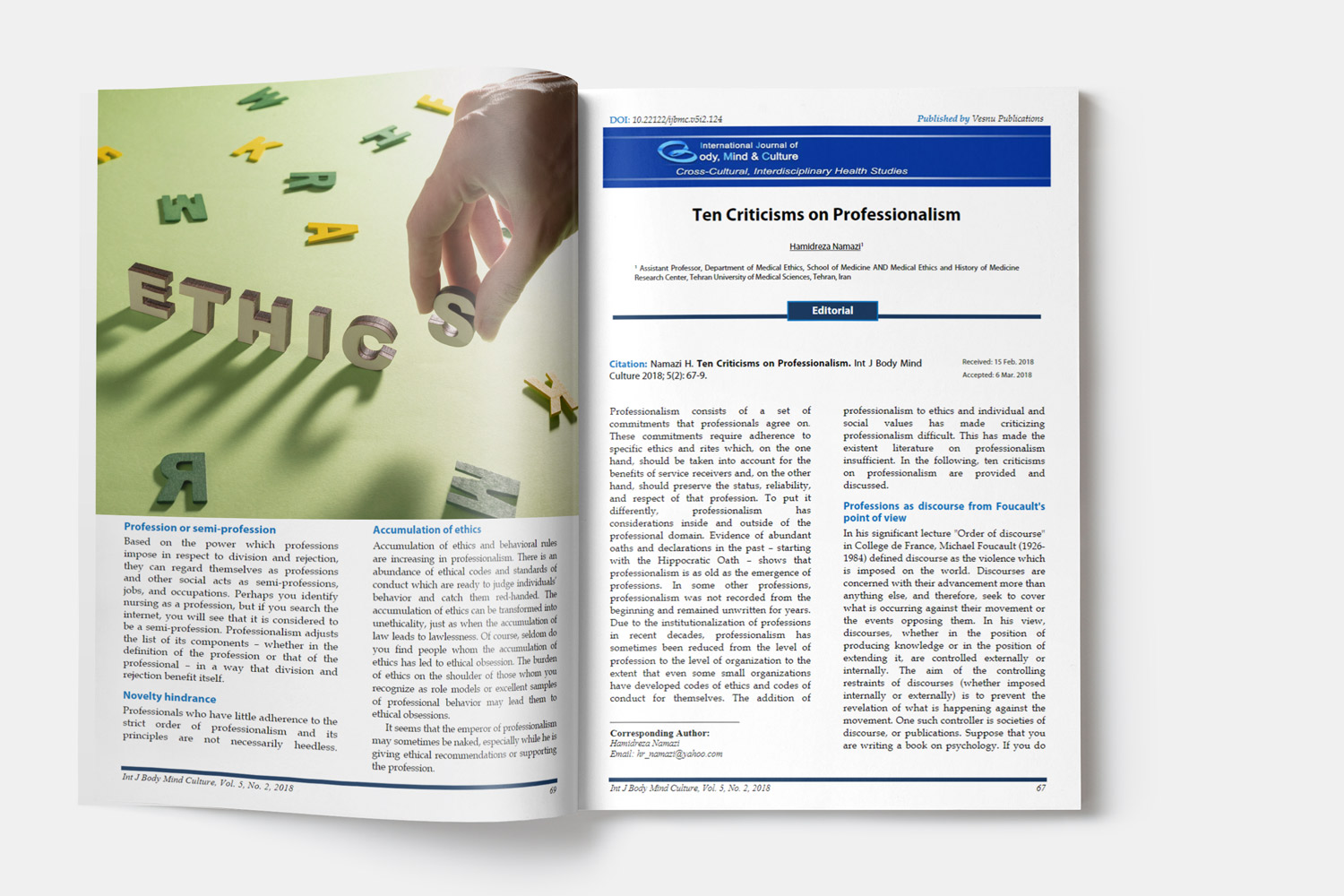Psychometric Properties of the Iranian and German Versions of the Posttraumatic Diagnostic Scale: A Cross-Cultural Study
Psychometrics of PDS: Iranian-German cross-cultural study
Downloads
Background: Reliable and valid measurement tools with strong psychometric properties are crucial in the evaluation of individuals experiencing trauma-related distress in both clinical and research contexts. Thus, this study investigated the psychometric properties of the Posttraumatic Diagnostic Scale (PDS) in Iranian and German samples.
Methods: A cross-sectional collaboration was conducted between Isfahan University of Medical Sciences in Iran and Philipp University of Marburg in Germany. The study involved a total of 1196 participants, with 364 participants from Iran and 832 participants from Germany. The participants were selected from the general population as well as individuals with mood/anxiety disorders from 2017 until 2018. The questionnaires used in this study included the Demographic Checklist, Patient Health Questionnaire (PHQ; Kroenke, Spitzer, & Williams, 2002), Screening for Somatoform Disorders-7 (SOMS-7; Rief & Hiller, 2003), and PDS (Foa et al., 1997). Factor analysis, correlations calculation, and diagnostic analysis of the data were conducted using SPSS software and R (4.3.1).
Results: Factor analysis of the PDS did not reveal a factor structure similar to previous research. Convergent validity was demonstrated by significant correlations between PDS scores and related measures. Diagnostic validity was established as the PDS effectively discriminated between individuals with mood/anxiety disorders and healthy participants. Sensitivity, specificity, and accuracy (all of them > 0.6 except for Iranian women = 0.39) revealed how accurately the test categorizes individuals in both populations. In the Iranian sample, AUC was around 70% accuracy in differentiation. The German sample's AUC of approximately 80% diagnostic capability between healthy and affected groups. The cutoff scores of men and women were 24 and 27 in the Iranian population, and 9 and 8 in the German population, respectively. Strong internal consistency coefficients (Cronbach's alpha > 0.91) were observed for both Persian and German versions of the PDS, confirming their reliability.
Conclusion: The study underscores the robust psychometric attributes of the Persian and German versions of the PDS, endorsing their reliability, validity, and diagnostic potential. Variations in factor structures across cultural groups emphasize the need for culturally-sensitive psychometric assessments. The PDS emerges as a valuable cross-cultural tool for diagnosing and assessing post-traumatic stress disorder (PTSD), with implications for clinical practice and research in diverse populations.
Downloads
Al-Bitar, Z. B., & Al-Ahmad, H. T. (2017). Anxiety and post-traumatic stress symptoms in orthognathic surgery patients. Eur.J Orthod., 39(1), 92-97. doi:cjw029 [pii];10.1093/ejo/cjw029 [doi]. Retrieved from PM:27076465
Bothe, T., Jacob, J., Kroger, C., & Walker, J. (2020). How expensive are post-traumatic stress disorders? Estimating incremental health care and economic costs on anonymised claims data. Eur.J Health Econ., 21(6), 917-930. doi:10.1007/s10198-020-01184-x [pii];1184 [pii];10.1007/s10198-020-01184-x [doi]. Retrieved from PM:32458163
Buckley, T. C., Blanchard, E. B., & Hickling, E. J. (1998). A confirmatory factor analysis of posttraumatic stress symptoms. Behav Res Ther, 36(11), 1091-1099. doi:S000579679800076X [pii];10.1016/s0005-7967(98)00076-x [doi]. Retrieved from PM:9737061
Comrey, A.L. & Lee, H.B. (2013). A first course in factor analysis. 2nd ed. New York, NY: Psychology Press. Hove.
de, Vroege L., Hoedeman, R., Nuyen, J., Sijtsma, K., & van der Feltz-Cornelis CM. (2012). Validation of the PHQ-15 for somatoform disorder in the occupational health care setting. J Occup Rehabil, 22(1), 51-58. doi:9320 [pii];10.1007/s10926-011-9320-6 [doi]. Retrieved from PM:21785907
Ebrahimi, A., Rief, W., Mirshahzadeh, P., Afshar, Z. H., Nasiri, D. H., Roohafza, H. et al. (2018). Psychometric properties of the Persian Version of Screening for Somatic Symptom Disorders-7(SOMS-7). Iran J Psychiatry, 13(4), 264-273. doi:IJPS-13-264 [pii]. Retrieved from PM:30627200
Foa, E. B., Cashman, L., Jaycox, L., & Perry, K. (1997). The validation of a self-report measure of posttraumatic stress disorder: the Posttraumatic Diagnostic Scale. Psychological assessment, 9(4), 445. doi: 10.1037/1040-3590.9.4.445 [doi].
Fuglsang, A. K., Moergeli, H., & Schnyder, U. (2004). Does acute stress disorder predict post-traumatic stress disorder in traffic accident victims? Analysis of a self-report inventory. Nord.J Psychiatry, 58(3), 223-229. doi:663CK9X5D87TL4VC [pii];10.1080/08039480410006304 [doi]. Retrieved from PM:15204210
Griesel, D., Wessa, M., & Flor, H. (2006). Psychometric qualities of the German version of the Posttraumatic Diagnostic Scale (PTDS). Psychol Assess., 18(3), 262-268. doi:2006-11088-003 [pii];10.1037/1040-3590.18.3.262 [doi]. Retrieved from PM:16953729
Hearn, M., Ceschi, G., Brillon, P., Furst, G., & Van der Linden, M. (2012). A French Adaptation of the Posttraumatic Diagnostic Scale. Can J Behav Sci, 44(1), 16-28. doi:10.1037/a0025591 [doi].
Hosseinnejad, M., Yazdi-Feyzabadi, V., Hajebi, A., Bahramnejad, A., Baneshi, R., Ershad, S. R. et al. (2022). Prevalence of Posttraumatic Stress Disorder Following the Earthquake in Iran and Pakistan: A Systematic Review and Meta-Analysis. Disaster.Med Public.Health Prep., 16(2), 801-808. doi:S1935789320004115 [pii];10.1017/dmp.2020.411 [doi]. Retrieved from PM:33779538
Hu, L., & Bentler, P. M. (1999). Cutoff criteria for fit indexes in covariance structure analysis: Conventional criteria versus new alternatives. Struct Equ Modeling, 6(1), 1-55. doi: 10.1080/10705519909540118 [doi].
Islam, M. S., Ferdous, M. Z., Sujan, M. S. H., Tasnim, R., Masud, J. H. B., Kundu, S. et al. (2022). The psychometric properties of the Bangla Posttraumatic Stress Disorder Checklist for DSM-5 (PCL-5): Preliminary reports from a large-scale validation study. BMC Psychiatry, 22(1), 280. doi:10.1186/s12888-022-03920-4 [pii];3920 [pii];10.1186/s12888-022-03920-4 [doi]. Retrieved from PM:35443625
Kessler, R. C., Aguilar-Gaxiola, S., Alonso, J., Benjet, C., Bromet, E. J., Cardoso, G. et al. (2017). Trauma and PTSD in the WHO World Mental Health Surveys. Eur. J Psychotraumatol., 8(sup5), 1353383. doi:1353383 [pii];10.1080/20008198.2017.1353383 [doi]. Retrieved from PM:29075426
King, D., Leskin, G., King, L., & Weathers, F. (1998). Confirmatory factor analysis of the clinician-administered ptsd scale: evidence for the dimensionality of posttraumatic stress disorder. Psychological assessment, 10(2), 90-96. doi: 10.1037/1040-3590.10.2.90 [doi].
Kroenke, K., Spitzer, R. L., & Williams, J. B. (2002). The PHQ-15: Validity of a new measure for evaluating the severity of somatic symptoms. Psychosom.Med, 64(2), 258-266. doi:10.1097/00006842-200203000-00008 [doi]. Retrieved from PM:11914441
Merckelbach, H., Dekkers, T., Wessel, I., & Roefs, A. (2003). Amnesia, flashbacks, nightmares, and dissociation in aging concentration camp survivors. Behav Res Ther, 41(3), 351-360. doi:S0005796702000190 [pii];10.1016/s0005-7967(02)00019-0 [doi]. Retrieved from PM:12600404
McCarthy, S. (2008). Post-traumatic Stress Diagnostic Scale (PDS). Occup Med (Lond.), 58(5), 379. doi:kqn062 [pii];10.1093/occmed/kqn062 [doi]. Retrieved from PM:18676430
McDonald, R. P. (1999). Test theory: A unified treatment. Mahwah, NJ: Lawrence. Erlbaum.
Nilsen, K. B., Sand, T., Westgaard, R. H., Stovner, L. J., White, L. R., Bang, L. R. et al. (2007). Autonomic activation and pain in response to low-grade mental stress in fibromyalgia and shoulder/neck pain patients. Eur.J Pain., 11(7), 743-755. doi:S1090-3801(06)00191-1 [pii];10.1016/j.ejpain.2006.11.004 [doi]. Retrieved from PM:17224287
Norris, A. E., & Aroian, K. J. (2008). Assessing reliability and validity of the Arabic language version of the Post-traumatic Diagnostic Scale (PDS) symptom items. Psychiatry Res, 160(3), 327-334. doi:S0165-1781(07)00330-7 [pii];10.1016/j.psychres.2007.09.005 [doi]. Retrieved from PM:18718671
Novy, D. M., Stanley, M. A., Averill, P., & Daza, P. (2001). Psychometric comparability of English- and Spanish-language measures of anxiety and related affective symptoms. Psychol Assess., 13(3), 347-355. doi:10.1037//1040-3590.13.3.347 [doi]. Retrieved from PM:11556271
Powell, S., & Rosner, R. (2005). The Bosnian version of the international self-report measure of posttraumatic stress disorder, the Posttraumatic Stress Diagnostic Scale, is reliable and valid in a variety of different adult samples affected by war. BMC Psychiatry, 5, 11. doi:1471-244X-5-11 [pii];10.1186/1471-244X-5-11 [doi]. Retrieved from PM:15725361
Powers, M. B., Gillihan, S. J., Rosenfield, D., Jerud, A. B., & Foa, E. B. (2012). Reliability and validity of the PDS and PSS-I among participants with PTSD and alcohol dependence. J Anxiety.Disord., 26(5), 617-623. doi:S0887-6185(12)00036-9 [pii];10.1016/j.janxdis.2012.02.013 [doi]. Retrieved from PM:22480715
Ribeiro, W. S., Mari, J. J., Quintana, M. I., Dewey, M. E., Evans-Lacko, S., Vilete, L. M. et al. (2013). The impact of epidemic violence on the prevalence of psychiatric disorders in Sao Paulo and Rio de Janeiro, Brazil. PLoS.One., 8(5), e63545. doi:PONE-D-12-09796 [pii];10.1371/journal.pone.0063545 [doi]. Retrieved from PM:23667636
Shahmiri, B. H., Ebrahimi, M., Khoshdel, A., Noorbala, A. A., Rahnejat, A. M., Avarzamani, L. et al. (2023). Studying the Prevalence of PTSD in Veterans, Combatants and Freed Soldiers of Iran-Iraq War: A Systematic and Meta-analysis Review. Psychol Health Med, 28(3), 812-818. doi:10.1080/13548506.2021.1981408 [doi]. Retrieved from PM:34579600
da Silva, H. C., Furtado da Rosa, M. M., Berger, W., Luz, M. P., Mendlowicz, M., Coutinho, E. S. F. et al. (2019). PTSD in mental health outpatient settings: highly prevalent and under-recognized. Braz.J Psychiatry, 41(3), 213-217. doi:S1516-44462018005007105 [pii];10.1590/1516-4446-2017-0025 [doi]. Retrieved from PM:30328959
Simms, L. J., Watson, D., & Doebbeling, B. N. (2002). Confirmatory factor analyses of posttraumatic stress symptoms in deployed and nondeployed veterans of the Gulf War. J Abnorm.Psychol, 111(4), 637-647. doi:10.1037//0021-843x.111.4.637 [doi]. Retrieved from PM:12428777
Stang, P. E., Brandenburg, N. A., Lane, M. C., Merikangas, K. R., Von Korff, M. R., & Kessler, R. C. (2006). Mental and physical comorbid conditions and days in role among persons with arthritis. Psychosom.Med, 68(1), 152-158. doi:68/1/152 [pii];10.1097/01.psy.0000195821.25811.b4 [doi]. Retrieved from PM:16449426
Tagger-Green, N., Nemcovsky, C., Gadoth, N., Cohen, O., & Kolerman, R. (2020). Oral and dental considerations of combat-induced PTSD: A descriptive study. Quintessence.Int, 51(8), 678-685. doi:841341 [pii];10.3290/j.qi.a44809 [doi]. Retrieved from PM:32577706
Uhac, I., Kovac, Z., Muhvic-Urek, M., Kovacevic, D., Franciskovic, T., & Simunovic-Soskic, M. (2006). The prevalence of temporomandibular disorders in war veterans with post-traumatic stress disorder. Mil.Med, 171(11), 1147-1149. doi:10.7205/milmed.171.11.1147 [doi]. Retrieved from PM:17153558
White, M. (2022). Sample size in quantitative instrument validation studies: A systematic review of articles published in Scopus, 2021. Heliyon., 8(12), e12223. doi:S2405-8440(22)03511-3 [pii];e12223 [pii];10.1016/j.heliyon.2022.e12223 [doi]. Retrieved from PM:36568672
Wittmann, L., Dimitrijevic, A., Ehlers, A., Foa, E. B., Kessler, H., Schellong, J. et al. (2021). Psychometric properties and validity of the German version of the Post-Traumatic Diagnostic Scale for DSM-5 (PDS-5). Eur.J Psychotraumatol., 12(1), 1965339. doi:1965339 [pii];10.1080/20008198.2021.1965339 [doi]. Retrieved from PM:34589176
Yehuda, R., Hoge, C. W., McFarlane, A. C., Vermetten, E., Lanius, R. A., Nievergelt, C. M. et al. (2015). Post-traumatic stress disorder. Nat.Rev.Dis Primers., 1, 15057. doi:nrdp201557 [pii];10.1038/nrdp.2015.57 [doi]. Retrieved from PM:27189040
Yufik, T., & Simms, L. J. (2010). A meta-analytic investigation of the structure of posttraumatic stress disorder symptoms. J Abnorm.Psychol, 119(4), 764-776. doi:2010-23724-005 [pii];10.1037/a0020981 [doi]. Retrieved from PM:21090877
Zhang, Y. L., Liang, W., Chen, Z. M., Zhang, H. M., Zhang, J. H., Weng, X. Q. et al. (2013). Validity and reliability of Patient Health Questionnaire-9 and Patient Health Questionnaire-2 to screen for depression among college students in China. Asia.Pac.Psychiatry, 5(4), 268-275. doi:10.1111/appy.12103 [doi]. Retrieved from PM:24123859
Copyright (c) 2023 International Journal of Body, Mind and Culture

This work is licensed under a Creative Commons Attribution-NonCommercial 4.0 International License.















